What is an Evidence Gap Map (EGM)?
Evidence Gap Maps (EGMs), more precisely, Evidence and Gap Maps (E&GMs), are closely linked to the concept of rigorous impact evaluation (RIE).
EGMs provide a visual representation of systematic reviews (SR) and single scientific studies (often RIEs) available in a certain sector or field, structured around a framework of interventions and outcomes. This means, EGMs are visual compilations of (rigorous) evidence on the impact of policies and programmes in a specific sector or thematic area. This makes it easy for decision-makers to get an overview, of where evidence is already available to be used and where evidence needs to be generated because of evidence gaps.
Here and here you can learn more about EGMs.
What practitioners say
Experts from German Development Cooperation share their experience with an EGM.
Christoph Langenkamp
Deutsche Gesellschaft für Internationale Zusammenarbeit (GIZ) GmbH
What motivated you to develop an E&GM?
When initiating activities in 2019/2020 on evidence in relation to nutrition sensitive programming and policies, we had to learn that there was a lack of a broader overview and came across the International Initiative for Impact Evaluation (3ie) and the E&GM methodology. We realised that this tool would provide us with a systematic overview of high-quality evidence and help us to navigate through the existing rigorous evidence on interventions and outcomes while pointing to remaining evidence gaps.
How has the E&GM benefited your work and informed decision-making?
The E&GM accelerates our work noticeably and makes it more efficient. It is an excellent tool to collate available rigorous evidence and link it to specific advisory processes at hand. It should be noted that the fact that the E&GM is regularly updated increases our confidence and its usability. We call it a “living E&GM”. Obviously, policy and programme advice are drawn from multiple sources of information, but the availability of a living E&GM advances the use of rigorous evidence in these processes. For example, we were able to use such evidence when developing the EU’s Quick Tip series on nutrition, targeting officials in EU Delegations.
Could you share one particular insight you gained regarding the usefulness of the evidence product?
At times, decisions are guided by anecdotal evidence that is considered common knowledge. With the help of the E&GM, we can efficiently question our assumptions. An example is that in case of unconditional cash transfers to men, men will often use it for desirable goods, such as alcohol or tobacco. In fact, we could not find evidence to support this assumption. Evidence showed that this is not the case.
What would you recommend others who are planning to develop an E&GM?
With an operative lens, I would suggest two points: Firstly, an E&GM should be broad and exceed the core question/theme. This is particularly the case when addressing political or cross-cutting themes like nutrition – this is one of the reasons why we suggested to place nutrition in the context of “transformation of the agri-food system”. Secondly, knowledge evolves quickly. Thus, I consider it key to have a ”living E&GM”. Otherwise, there is a risk that critical new evidence is missed when making policy recommendations


